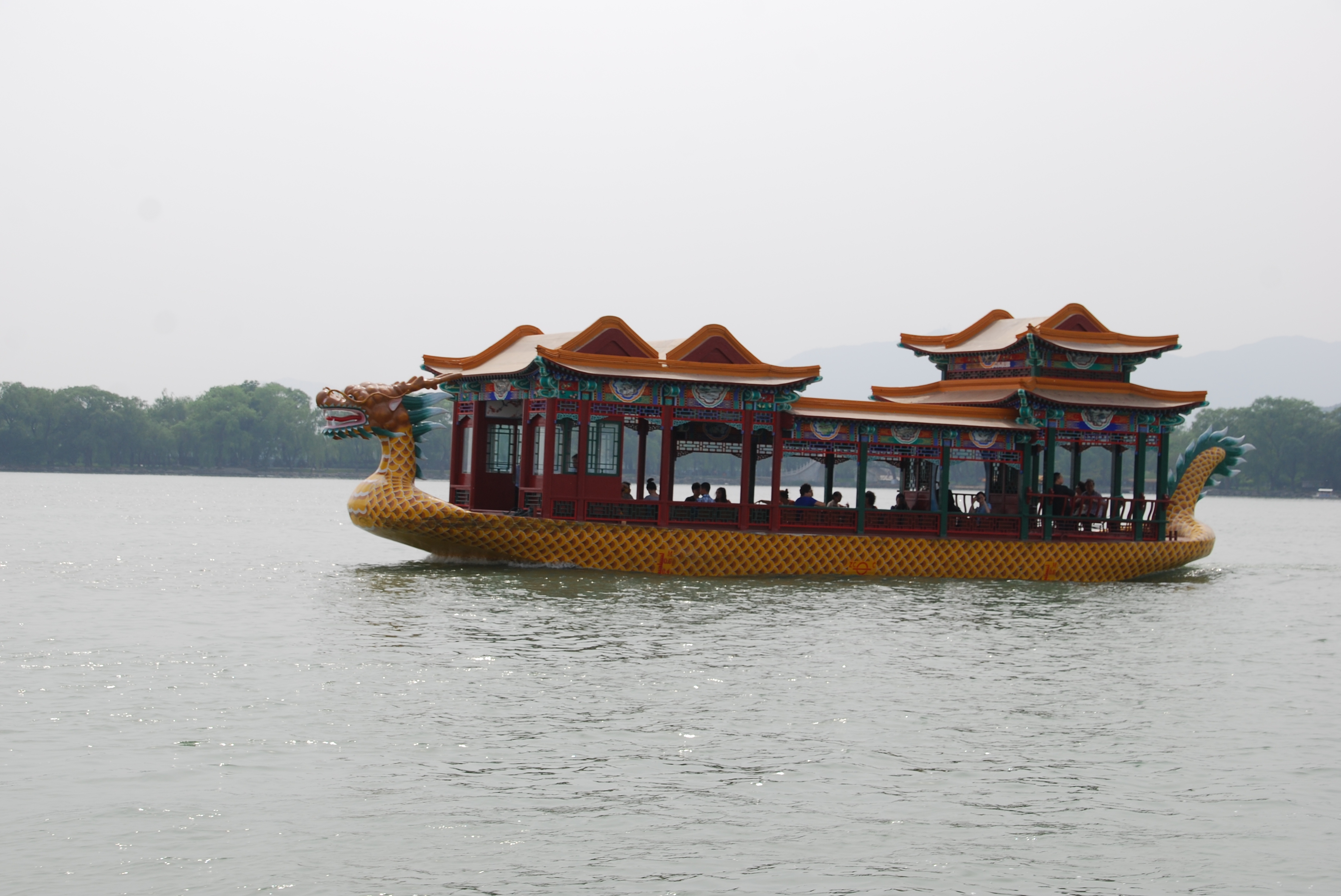Beijing bonanza
There is no escaping the blue-brown skyline of Beijing in the early summer. It sits on the city, makes visibility hazy, the cars dirty and the people wary. But the days are pleasantly warm, evenings are delightful and the city offers a range of historical and cultural attractions that can keep any visitor busy for days. And that’s perfect for us as we planned to maximise our extra time before flying to Lhasa. And in a city twice as large as Bangkok – a scary thought in itself – we were up to the challenge.
First stop was the Summer Palace, built for the emperors to enjoy a cool summer setting away from the hustle and bustle of Beijing but now sitting on the outskirts of the sprawling metrapolis. We used a relay of a taxi and three boat trips through various waterways to eventually find ourselves at the base of the mountain sporting the main temples and buildings of the Palace complex. The whole Palace grounds cover an astounding 290 hectares with the main feature being a large lake and a small mountain called Longevity Hill. The Palace was originally built in 1790, has been damaged in various wars and rebuilt, now mainly used as a place for the locals to visit and appreciate their rich culture and history.
We strolled the grounds at the lake’s edge and then slowly climbed up the hill, passing through numerous buildings and temples. The architecture of these structures was beautifully and classically Chinese (what a surprise!), freshly painted and well maintained. We also loved some of the names given to the buildings, such as the Hall of Dispelling Clouds, Tower of the Fragrance of Buddha, the Realm of the Multitudinous Fragrance, the Pavilion of Multi-layered Greenery and our favourite – the Garden of Harmonious Interests.
We eventually made our way back down the hill and having already endured hot taxis with cold drivers we caught the brilliant subway to the Drum Tower and Bell Tower complexes close to the zoo. These ancient structures are in the middle of one of the oldest parts of the city in small village-like communities called hutongs. We couldn’t pass up the chance to hire an old rickshaw driver that spoke zero English for a tour down the narrow alleyways and backstreets of the local hutong, great fun, and finished it off with a beer at a restaurant on the footpath.
The next day we continued our crash course in Chinese culture and history by heading to the Silk Market, Beijing’s biggest and best indoor market. The Silk Market has gone a bit upmarket since our last visit but is still the place to go for clothes, bags, shoes and all sorts of other stuff – as long as you are prepared to put up with the constant and annoying shop keepers who plead for you to come in their shop and the hard core bargaining that is required to get a good price. We each bought a few items, all good fun, but two hours in the Silk Market (where we didn’t see any silk) is like a lifetime anywhere else.
Not satisfied with our haul, we headed for another major shopping area called Qianmen Street. This area is just south of the famous Tiananmen Square and is reported to have been restored to reflect the 600 year old Qianmen district of the city. Whatever the case, we found some great back alleyways for more shopping and a fantastic lunch in a local restaurant.
Our last stop of the day was actually quite a way out of town, a place called the 798 Artist Area, recommended by our friends. It was a major challenge to get there as no taxis would do it and we ended up catching a long chain of subways and metro trains until we got close enough to get a taxi to do the final leg. The 798 area is known for being almost a full suburb of art galleries, studios, art schools, displays, design stores and all sorts of artsy stuff. It also has cafes and restaurants and various other distractions which makes it a good afternoon out, especially on the weekend when it might be a bit buzzier.
Our last night in Beijing was spent eating and drinking on the street, trying some of the local cuisine, doing it like the locals do it. It was a fitting end to four days in one of the largest and most dynamic cities in the world, rich with history and culture, maybe a little twisted in its society half way between its old communist past and its new capitalist ways. The people are not smiling or friendly, they push and shove and show little of the grace which is more common in other places but they are certainly on a mission….to where we’re not too sure.
As is always the case in China, some of the signs translated into English give us pause for a smile. Over the last couple of days a few caught our attention, like a sign over the urinal that said “Take one step closer to avoid spillage”. Or how about the instructions on an Exit sign of a store that said “The Instancy Disperses Exit”. But our favourite of the day was a sign that said “Multi-function physical therapy apparatus”. The item it was selling – a vibrator.









